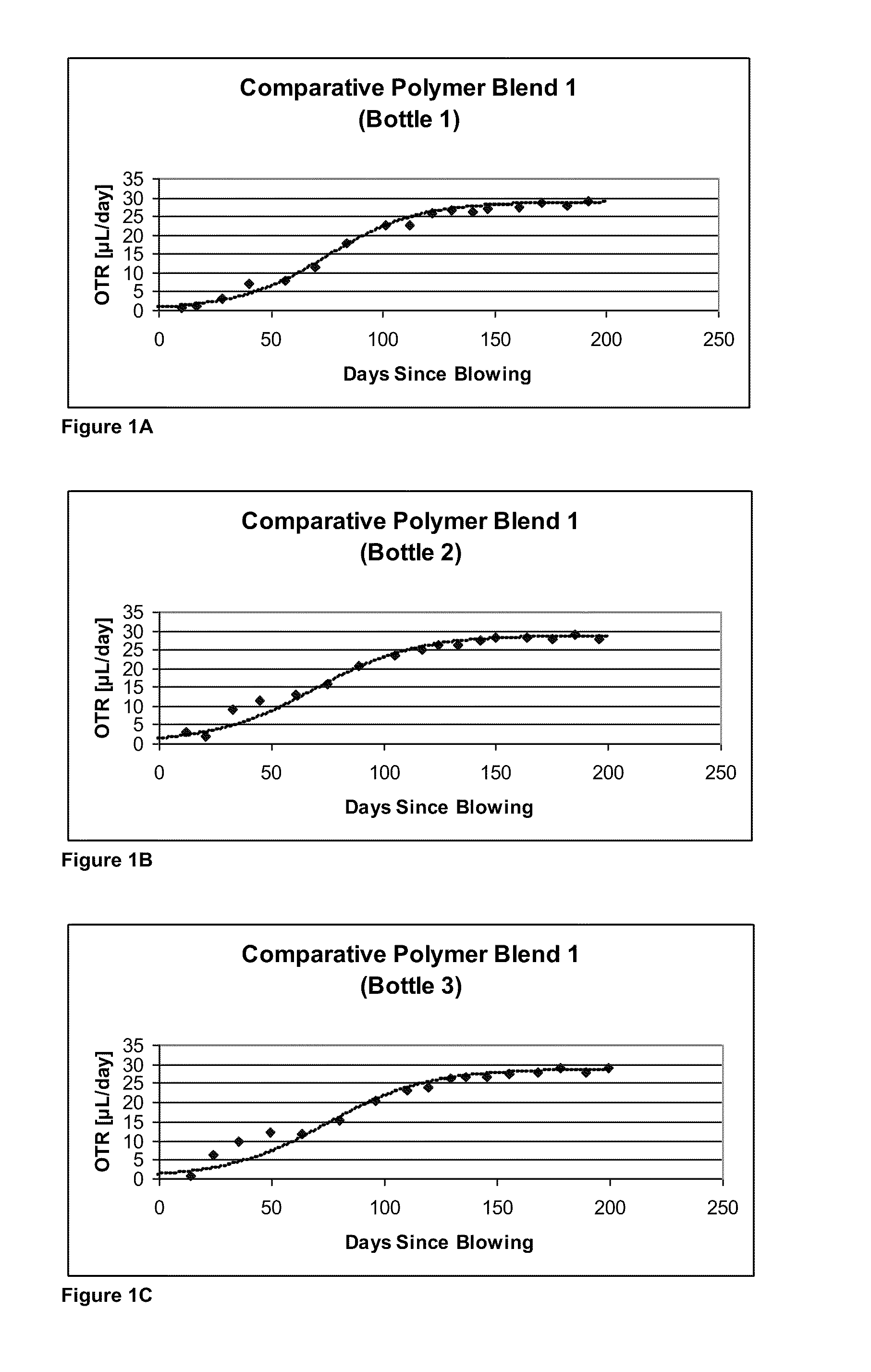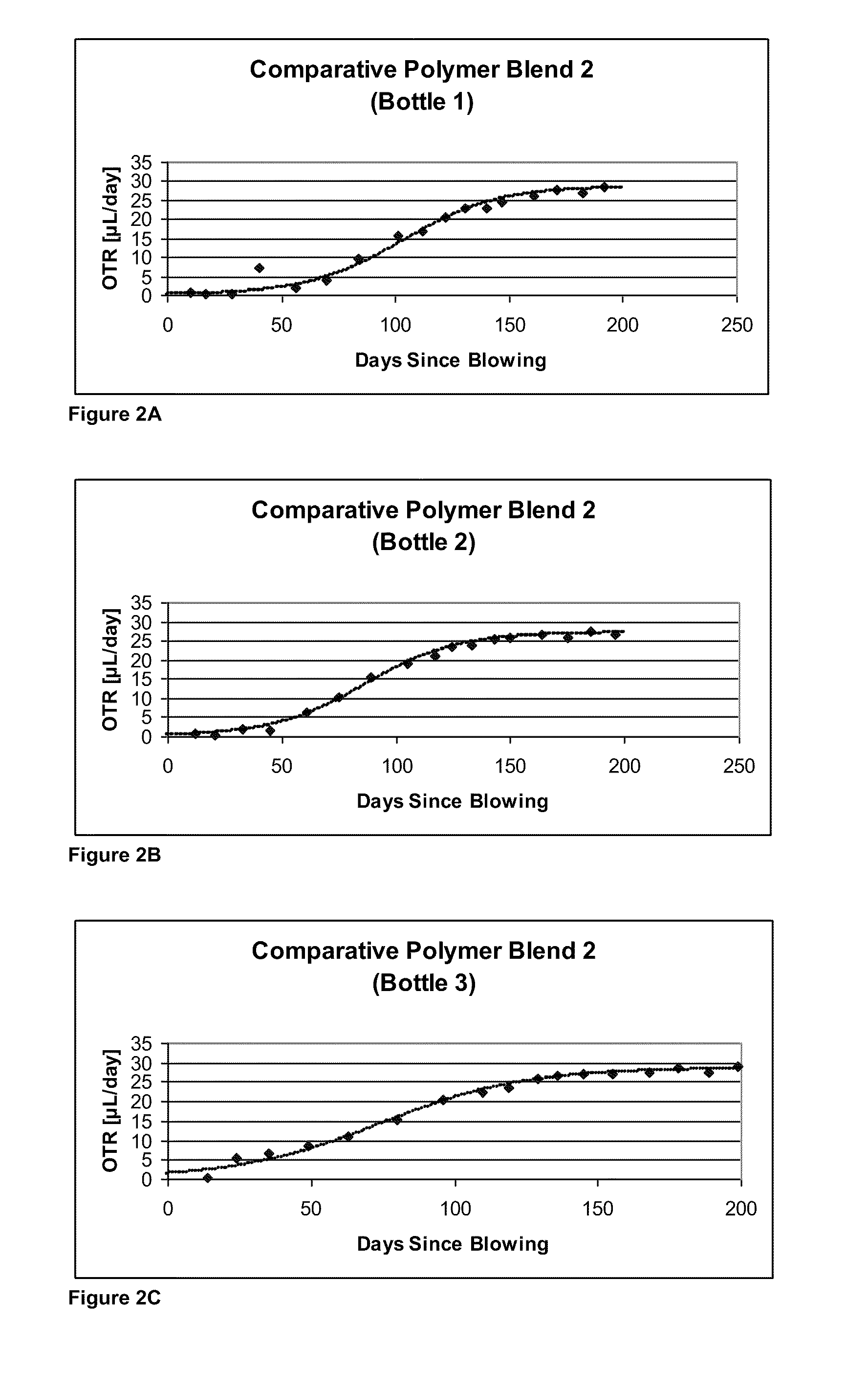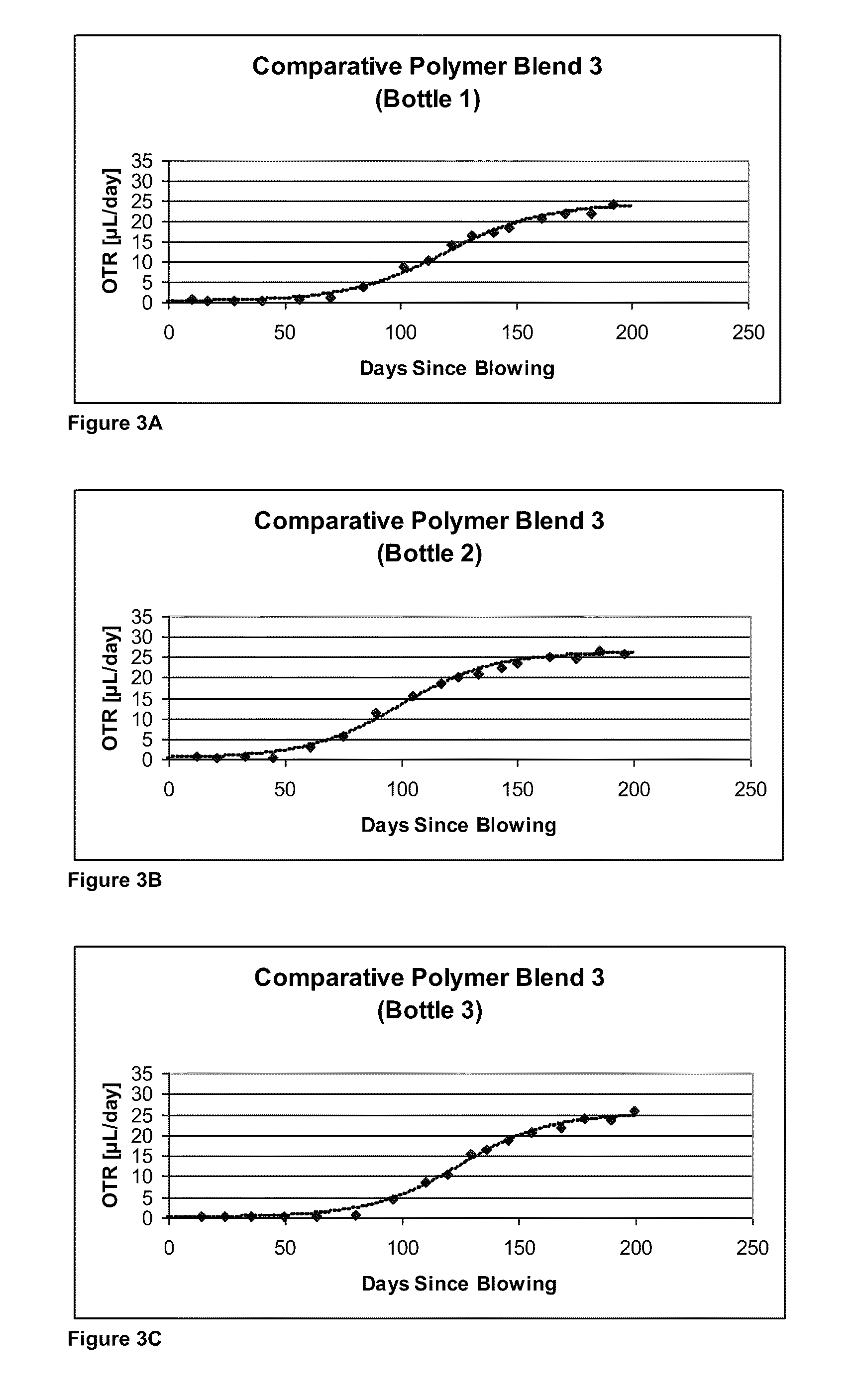Oxygen-scavenging polymer blends suitable for use in packaging
a technology of oxygen-scavenging polymers and polymers, which is applied in the field of polymer blends, can solve the problems of shortening the life of the product, and affecting the product quality of the product,
- Summary
- Abstract
- Description
- Claims
- Application Information
AI Technical Summary
Benefits of technology
Problems solved by technology
Method used
Image
Examples
examples
[0209]The intrinsic viscosity (It.V.) values described throughout this description are 20 set forth in dL / g unit as calculated from the inherent viscosity (Ih.V.) measured at 25° C. in 60 / 40 wt / wt phenol / tetrachloroethane. The inherent viscosity is calculated from the measured solution viscosity. The following equations describe these solution viscosity measurements, and subsequent calculations to Ih.V. and from Ih.V. to It.V:
ηinh=[ln(ts / to)] / C [0210]where ηinh=Inherent viscosity at 25° C. at a polymer concentration of 0.50 g / 100 mL of 60% phenol and 40% 1,1,2,2-tetrachloroethane[0211]ln=Natural logarithm[0212]ts=Sample flow time through a capillary tube[0213]to=Solvent-blank flow time through a capillary tube[0214]C=Concentration of polymer in grams per 100 mL of solvent (0.50%)
[0215]The intrinsic viscosity is the limiting value at infinite dilution of the specific viscosity of a polymer. It is defined by the following equation:
ηint=limC→0(ηsp / C)=limC→0 ln(ηr / C)[0216]where ηint=Int...
PUM
| Property | Measurement | Unit |
|---|---|---|
| wt % | aaaaa | aaaaa |
| wt. % | aaaaa | aaaaa |
| Tg | aaaaa | aaaaa |
Abstract
Description
Claims
Application Information
 Login to View More
Login to View More - R&D
- Intellectual Property
- Life Sciences
- Materials
- Tech Scout
- Unparalleled Data Quality
- Higher Quality Content
- 60% Fewer Hallucinations
Browse by: Latest US Patents, China's latest patents, Technical Efficacy Thesaurus, Application Domain, Technology Topic, Popular Technical Reports.
© 2025 PatSnap. All rights reserved.Legal|Privacy policy|Modern Slavery Act Transparency Statement|Sitemap|About US| Contact US: help@patsnap.com



